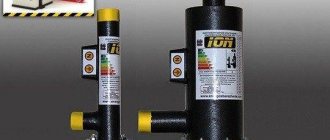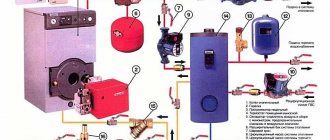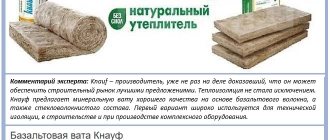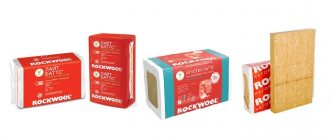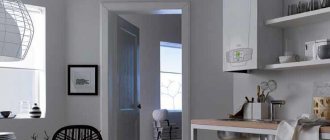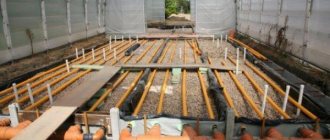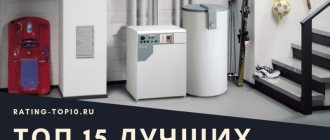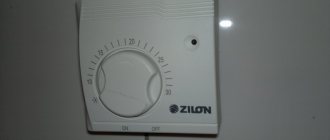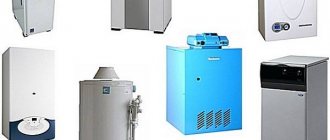Insulating the walls of a house or apartment can reduce heat loss and save money on heating. Insulation materials differ in origin, structure and shape. They vary significantly in price and functionality.
The editors of the YaNashla website will help you navigate insulation materials and choose the appropriate material for your apartment or house, wooden, panel or brick walls.
Laying glass wool
Insulation or thermal insulation (thermal insulation) is a material that reduces heat loss from the inside of a building to the outside.
How to thermally insulate the walls of a house or apartment?
There are several ways to insulate the walls of a house or apartment:
- Make a hinged ventilated facade. In this case, non-combustible materials must be used.
- Install the insulating material and then apply thin-layer plaster. An example is a wet facade.
It is worth clarifying that, according to the laws of physics, it is safer and more effective to insulate a house either comprehensively - both inside and outside, or only outside. Then the wall will not get wet or moldy. If it is impossible to sheathe the outside of the house, for example, the building is an architectural monument, then it is permissible to insulate it only on the inside. But then you need to make calculations so that the dew point does not end up in the load-bearing structure of the wall.
The material for the outer part of the wall must be weather-resistant. Insulation for interior decoration is environmentally friendly.
Polyurethane foam as insulation
One of the best modern materials is polyurethane foam. This material is a type of plastic. The structure of this material is porous, the content of gaseous substances in it is about 90 percent. The material has very good tonic properties. It is very light and does not weigh down the wall structure.
The disadvantages include its high price. It is also not afraid of ultraviolet radiation and is flammable. In addition, special spraying equipment is required to install this insulation.
How to choose insulation for walls
When choosing a material for thermal insulation, you should rely on the climatic conditions of the region and the budget allocated for the renovation of the building. The main selection criteria when purchasing insulation are:
- Thermal conductivity. This is the property of any matter to transfer heat. The lower the value, the worse the material conducts heat. This means that it’s better that the walls don’t freeze and remain warm. The optimal range is 0.038-0.046 W/(m×K), the best coefficient is 0.031 W/(m×K).
- Vapor permeability. The ability of a material to transmit small particles of moisture and steam. Such insulation materials are said to “breathe”. If the material is not vapor-permeable, mold and mildew will quickly grow in the room.
- Shrinkage. Under their own weight, some thermal insulation materials are greatly deformed, losing shape and volume. To avoid this, during installation you need to spend more fixing agents - clamping strips, glue, dowels (depending on the insulation). Or look for a more durable insulation.
- Mass and density. The higher the density, the less heat the material transmits. But with increasing density, the mass of the product increases, which must be taken into account when calculating the load on the wall.
- Hygroscopicity. There are 2 types of heat insulators - non-absorbing water and absorbing. The first ones do not get wet in rain or snow. The latter are hygroscopic and can absorb on average about 1% in 24 hours.
- Flammability. According to this parameter, they are divided into 3 types - flammable, low-flammable, non-flammable. Affects the fire safety of the building.
- Thickness. The cross-section of the material in a roll or sheet can be from 10 to 200 mm. You need to know the value in order to correctly calculate the space inside or outside the building for the cladding.
- Life time. There are insulation materials with a service life of 20 years, and others with a service life of 50-60. Typically, the manufacturer indicates the service life under ideal operating conditions. If the material is subjected to constant negative influences for which it was not designed, then it will deteriorate much earlier. Also, the insulation may deteriorate ahead of time due to improper installation technology.
- Environmentally friendly. An indicator of how safe the insulation is in operation. Does it release any toxic substances at room temperature.
- Chemical resistance. Shows how resistant the insulation is to acids and alkalis. This determines whether plaster or paint can be applied to it. Some of the insulation materials lose up to a quarter of their mass after painting or plastering. This must be taken into account when installing a heat-insulating structure.
There are also factors that indirectly influence the choice of product:
- Wall type. It is easier to glue insulation to a brick wall, and to attach it to a wooden wall using self-tapping screws and nails. Therefore, for a brick house it is better to take lighter material.
- Easy to install. Some materials, such as glass wool, can get into the eyes or lungs and severely injure mucous membranes and skin. Working with such insulation requires special care. According to safety rules, installation must be carried out in special clothing. But at the same time, the same glass wool does not need to be cut exactly. It is easy to install and secure.
Glass wool fibers under a microscope.
Easily injure the skin On the contrary, polystyrene foam in its normal state is not capable of causing harm.
But for high-quality installation, you need to accurately cut the sheets. So each material has its pros and cons.
The best fiberglass insulation
This type of product in the rating is popularly called glass wool. It is produced by melting soda, sand, borax, limestone and broken glass. This produces thick fibers with varying orientations that effectively inhibit heat transfer. The material is cheaper than its analogues, but it hurts your hands a lot during installation.
Isover Warm House
Rating: 4.9
In first place in this rating category is a product known throughout the world. Glass wool for the home is produced in rolls with a cross-section of 5 cm and a width of 55 cm. In production, the company uses patented TEL technology, which is highly environmentally friendly. The insulation is suitable for use in houses on pitched and straight roofs, in floors and wall partitions. The product complies with ISO9001 and EN13162 standards. In addition to heat insulation, it helps protect against noise. The thermal conductivity of the substance is 0.040 W/(m*K). Buyers in reviews note the affordable price and long service life with proper protection from water.
Our experts added insulation to the rating due to its convenient release form in rolls from 5.5 to 7 meters long. This is practical when filling walls in plasterboard partitions, in order to immediately close the space from floor to ceiling and make do with a minimum of cuts. The 50mm thickness is good for the profile width.
Advantages
- complies with hygienic standards (can be used in children's institutions);
- does not burn;
- entirely made from natural materials;
- elastic and does not require precise dimensions when cutting;
- allows steam to escape from the house to the outside.
Flaws
- does not hold its shape well;
- properties deteriorate when wet;
- inconvenient to lay;
- average thermal conductivity.
Ursa Geo
Rating: 4.8
In second place in the ranking of the glass wool category is a domestic brand, which is often used as a common noun when indicating the type of insulation. Now these products are known throughout the CIS and are in high demand. The thickness of home insulation varies from 5 to 10 cm, and the width of the roll is 120 cm. A square meter weighs 1 kg (with a cross-section of 10 cm), which is convenient for calculating the weight of load-bearing structures. Glass wool is allowed to insulate not only the walls, floor and roof of the house, but also chimney, heating, and ventilation pipes. The product belongs to fire hazard class KM0. Experts in the reviews like the vapor permeability of 0.64 mg/mhPa, but its thermal conductivity indicator is inferior to its analogues and is in the range of 0.040-0.046 W/(m*K).
The product is rated as the best for pitched roofs and floor insulation in the house, since it is also available in convenient rolls. The buyer can choose to have two rolls of 6 m each in one package, or one 10 m long. When installed in floors along joists, this allows one roll to be stretched immediately along the length of the room and saves time.
Comparison of materials
- Mineral wool is a product of melting basalt rocks.
- Glass wool is a coarse fibrous material obtained by melting glass, sand, soda, borax, and limestone.
- Foam plastic is a foamed cellular plastic.
- Polystyrene is the result of the polymerization of styrene.
- Extruded polystyrene foam - foamed polystyrene.
- Polyester fiber is a product of processing recycled plastic materials. The synthetic fibers of this insulation are similar to padding polyester.
| Insulation | pros | Minuses |
| Basalt group mineral wool | • low thermal conductivity; • non-flammable, fire resistant; • does not emit smoke when exposed to fire; • light; • easy to install; • vapor permeable; • withstands the effects of alkalis and acids; • vibration-resistant; • dielectric; • environmentally friendly. | • does not hold its shape well; • special protection is required when working. |
| Glass wool | • budget; • weighs little; • high chemical resistance; • elastic and durable; • environmentally friendly; • vibration-resistant; • non-flammable. | • Tiny particles of material may cause respiratory or visual damage. For installation you need special clothing, a respirator, safety glasses, and gloves. • Hygroscopic; • Does not hold its shape. |
| Styrofoam | • inexpensive; • easy; • does not absorb water; • durable, withstands mechanical loads. | • highly flammable; • when burning, it releases toxic substances; • crumbles and crumbles during operation; • low density; • precise cutting is required during installation; • easily destroyed under the influence of technical liquids or their vapors - gasoline, acetone. |
| Expanded polystyrene | • not hygroscopic; • low thermal conductivity coefficient; • keeps its shape for a long time; • withstands compressive loads. | • highly flammable; • difficult to install - you need to cut the material precisely; • easily destroyed by insects and rodents. |
| Polyester fibers | • keep their shape; • not hygroscopic; • low thermal conductivity; • hypoallergenic; • lungs. | flammable. |
Types of materials for internal thermal insulation
Among the many types of insulation that can be used to insulate the interior walls of a house, we will tell you about the most popular and most in demand options. These include fiberboard, glass wool, polystyrene foam, cork wallpaper, etc.
Let's look at each of them in more detail.
Option #1 - fiberboard slabs
Fiberboard is an excellent material for insulating walls from the inside, quite cheap, one might say economy class.
Fiberboard boards are produced from waste from the wood processing industry and are glued together with glue made from natural resins when exposed to high temperatures and pressure.
The material is treated with antiseptic elements and is not exposed to high temperatures and high humidity.
Fiberboard is successfully used for soundproofing interior partitions and thermal insulation of walls. Installation with fiberboard boards is very simple. Sheets are fastened to a metal or wooden frame
Option #2 – glass wool
Glass wool is the most common, budget material for wall insulation. As practice shows, there is a big drawback due to which experts do not recommend using it on the inside of walls.
It absorbs moisture very well, which reduces its thermal insulation properties - the material decreases in volume and size, which leads to significant heat loss.
Glass wool is not suitable for insulating interior walls in a room; it is better suited for insulating floors and ceilings
For external insulation, glass wool is laid end-to-end between wooden beams so that it tightly covers the required space.
Option #3 – mineral wool
A material made from certain types of igneous rocks is popularly called mineral wool, although in fact we are talking about stone wool. The term “mineral” includes not only stone, but also glass wool and slag wool.
Today this material is most in demand; it has many positive characteristics:
- high level of thermal insulation;
- does not react to high temperatures and combustion;
- sound insulation at the highest level;
- strength, practicality and durability.
Mineral wool is used as insulation not only for the internal walls of a house, but also for attic ceilings and external walls of buildings.
Mineral wool slabs come in different hardnesses - the stiffer the slab, the higher its cost.
Mineral wool is well suited for internal wall insulation. It must be laid tightly, end-to-end. But experts are inclined to believe that it will bring more benefits on the external walls of the house.
The thermal insulation properties of more rigid and less rigid slabs are almost the same. For interior work, less rigid types are used.
More rigid types are relevant for external insulation of facades. This material comes in thicknesses of 50 mm and 100 mm. Less thick – 50 mm. It is used for internal insulation. Thicker – 100 mm – for external insulation of facades.
The only drawback of mineral wool is that it needs to be covered with an additional partition made of plasterboard, plastic, OSB boards or other materials. This significantly reduces the living space of the room.
Option #4 – polystyrene foam
Polystyrene foam has long been used in the construction industry as a cheap material for sound and waterproofing of premises.
Compared to mineral wool, it has better thermal insulation properties, so a thinner slab can be installed indoors. As a result, the living space will practically not decrease.
Along with positive qualities, polystyrene foam has a number of disadvantages:
- The structure of the material is very fragile, so work with it should be carried out very carefully.
- At the slightest violation of the integrity of the sheet, heat loss increases significantly.
- Rodents are a threat to foam boards; they simply adore it. If there is access, the slightest hole, after a certain period of time, the sheets will look like Dutch cheese.
- A very flammable material - when burned, it emits caustic, poisonous smoke.
Lay the foam on the surface, using construction adhesive for fastening, and apply it generously over the entire area of the sheet.
It is recommended to insulate walls with foam plastic carefully, close to the surface, leaving no gaps or chances for rodents to penetrate
Option #5 – polystyrene
Polystyrene is a more innovative insulation for walls. Its density is much higher than the density of foam, which makes its installation much easier.
On the other hand, polystyrene slabs do not fit well together, forming many uneven joints that need to be coated with high-quality sealant.
To ensure a tight fit of the sheets and secure them to the wall, it is recommended to use a solution of a waterproof mixture for bathrooms and bathrooms.
When insulating rooms with polystyrene, it is recommended to carefully consider sealing the seams between the slabs. This will prevent warm air from leaking between them and prevent condensation from forming.
We also recommend reading about thermal insulation of premises using types of expanded polystyrene:
- Insulation with extruded polystyrene foam.
- Thermal insulation of premises with penoplex.
The polystyrene boards have factory notches for a good fit to the wall, but craftsmen advise applying your own notches with a construction hacksaw for a 100% strong and reliable structure
Option #6 – cork wallpaper
One of the most modern environmentally friendly thermal insulation materials that are used to insulate a house from the inside is cork wallpaper. They are made from natural ingredients: processed, crushed and compressed cork bark.
Cork wallpaper is not only a type of insulation , but also a material that is perfect for finishing and decorating walls. A room decorated with this material, which is warm even in appearance, radiates an aura of comfort and coziness.
Characteristics of cork material:
- has antibactericidal properties;
- excellent sound insulation;
- heat loss is reduced to zero;
- strength and durability of the coating;
- high antistatic properties;
- non-flammable material;
- environmentally friendly material that does not emit harmful vapors and compounds.
Cork wallpaper is divided into two types: the first - with a natural porous structure, the second - coated with a layer of special varnish. Cork as insulation is available in rolls and slabs of various sizes.
Installing such insulation is very simple - for this you need to have rolls of wallpaper, a sharp knife and specialized glue.
The big and only drawback of such insulation is its price. The cost of a sheet or roll of cork is much higher than the cost of any artificial materials
Option #7 – polyurethane foam
Polyurethane foam is a material that is sprayed onto walls in liquid form. It has excellent waterproofness and thermal insulation properties. After hardening, it has a loose structure, so it is almost impossible to plaster the wall.
For effective application, formwork is made, usually wooden, to be filled with polyurethane foam substance. After hardening, it is necessary to construct a hydro- and vapor barrier from a layer of polyethylene film, which is attached to adjacent walls, in the floor and ceiling.
After applying the polyurethane foam solution to the wall and hardening, it is necessary to erect an additional wall from plasterboard, fiberboard, OSB, plywood or any other materials
Option #8 – liquid ceramic insulation
Another innovative way to save heat in a room is liquid ceramic ultra-thin thermal insulation - gastrointestinal tract. It has high waterproofing, thermal insulation and noise insulation properties.
Its functionality is in demand in the housing stock in preparation for the heating season. Thermal paint is suitable for insulating ceilings, balconies, interior walls, and for the facades of cottage and multi-story buildings.
It is in demand for thermal insulation of pipes and pipelines, and is used for sealing heating points: boiler houses, heating networks and other structures.
Thermal paint of the gastrointestinal tract is used for painting surfaces of various types, for example, concrete, metal, brick, aerated concrete and other building materials.
Among the advantages, manufacturers note:
- absolute safety for human health;
- reflectivity of the material;
- endurance to low temperatures – can withstand temperatures of minus 60 °C;
- The material is strong, durable, resistant to sunlight.
Among other things, this type of ultra-thin ceramic thermal insulation is highly energy efficient. The thickness of paint applied to the wall is from 2 to 5 mm.
The use of liquid ceramic insulation will make it possible to reduce heat loss and material costs for energy resources
Option #9 – ecowool
Ecowool is a type of new insulation based on cellulose materials. This material is made from waste paper, antiseptics and fire retardant.
This insulation is absolutely not fire hazardous. In aggressive conditions, cellulose wool performs well.
The advantages of ecowool include:
- environmental friendliness;
- safety;
- hypoallergenic;
- absence of condensation formation, respectively, all kinds of decomposition, fungi.
This type of insulation has good soundproofing and thermal insulation properties. Protects the building from cold in winter and heat in summer.
With the invention of cellulose insulation, it became possible to build lightweight structures - the pressure on the foundation due to the lightness of the insulation material became much less.
Ecowool is used to insulate any type of structure: it is poured into any, even the smallest holes, it fills the entire space, which facilitates the process of its installation.
Ecowool is applied manually using a blowing machine using the dry backfill method, which allows you to obtain a dense, continuous layer of insulation without seams
Using a pressure blowing unit, cotton wool is supplied to the surfaces it insulates. Before this, it is disheveled in the hopper of the application machine. Thanks to this technology, wool can be fed up to 30 m.
There is another method of laying ecowool - this is the wet application method.
For brick or concrete walls, effective insulation is to increase the thickness of the wall with decorative stone, plaster or brick. The wooden walls in the room are additionally lined and insulated with wood. These types of insulation are quite expensive and require considerable capital investment.
In some cases, in addition to insulating the walls, it is worth taking care of the insulation of the floor and ceiling in the house.
The main mistakes when choosing insulation for walls
Let's look at the main mistakes when choosing thermal insulation materials. This will save you from unnecessary expenses and rework.
- Saving. A low-quality thermal insulator will not only quickly become unusable, but will also compromise the integrity of the wall. Poor insulation can cause mold, mildew, or even the collapse of part of the façade. Therefore, when choosing insulation, you should not take the cheapest product in the store.
- Fire safety. The insulation must not only be non-flammable or low-flammable, but also environmentally friendly. When choosing between synthetic and natural insulation, give preference to the latter.
Comparison of insulation materials
There are a wide variety of thermal insulation materials on the market. The choice of material depends on the type of building being insulated (garage, warehouse, residential building, barn, etc.), the method of insulation - external, internal and other indicators. Well, and of course, from the wishes of the customer himself.
Traditional heat insulators for external walls of residential buildings can be considered: polystyrene foam, mineral and basalt wool, extruded polystyrene foam, fiberglass, polyurethane foam, new generation cellular insulation.
What conclusions can be drawn from the table? Pensidioplast and extruded polystyrene foam can be considered an absolute outsider in all respects. Although these materials have good thermal conductivity, they are significantly inferior to other materials in other parameters.
True, it’s worth paying tribute to - these heat insulators are by far the cheapest on the construction market. Let's take a closer look at what materials can be used to insulate a house and what can't, what insulation materials are available for your home and which one you should choose.
The best manufacturers
According to builders and customer reviews, the most reliable brands are:
- Isover is a subsidiary of the French construction concern Saint-Gobain. Izover is the only manufacturer in the Russian Federation that simultaneously produces two types of mineral wool - basalt and quartz. The company’s catalog also includes sound and heat insulation solutions made from glass and mineral fibers, expanded polystyrene (for walls, roofs, pipelines, etc.)
- Knauf is a German manufacturer of construction equipment and materials.
- Rockwool is an international group of companies headquartered in Denmark. The Rockwool division is engaged in the development and production of stone wool for heat and sound insulation, as well as fire protection of all types of buildings, ships, and equipment. The materials are made from gabbro-basalt rocks.
- URSA is one of the most famous Spanish companies producing heat and sound insulation materials. The company's name has become a household name in construction. URSA products have been represented on the Russian construction market for more than 20 years. The products meet international quality standards, are safe, environmentally friendly, and durable.
- Penoplex is a Russian manufacturer that produces polymer materials for hydro- and thermal insulation, decorative and finishing works.
- TechnoNIKOL is a Russian manufacturer of thermal and waterproofing insulators, as well as roofing materials.
- ShelterEcoStroy is a Russian manufacturer of environmental insulation materials. The products are distinguished by high heat and sound insulation qualities. The company's product range includes solutions for wind protection and insulation of frame houses, thermal insulation of walls, basements and basements, roofs, as well as technological equipment.
Leading manufacturers of thermal insulation for walls
In a country where many regions have a harsh climate, home insulation is important 10 months a year. Therefore, the market is overflowing with various offers of protective materials. However, today it is not only the presence of low thermal conductivity and affordable cost that comes to the fore, but also the components that will affect the quality of life of all inhabitants of a warm home.
Therefore, we suggest paying attention to products from well-known manufacturers that have a good business reputation and official safety certificates for their products.
Rockwool
Danish company producing heat and sound insulation products, operating on the market for more than 100 years. Its basalt-based mineral wool is considered the best insulation for facades on the Russian market.
Knauf
The German corporation, founded before the Second World War, experienced its rebirth, having once begun research on thermal protection from fiberglass. Today it is widely represented on the Russian building materials market, including products from the “Warm Walls” line.
Saint-Gobain (Isover)
An international corporation headquartered in Paris boasts a history of more than three centuries, which began as a glass manufactory. In the field of heat-saving materials, the Izover brand is well known.
TechnoNIKOL
An international company with Russian roots, which produces a line of thermal protection and waterproofing at factories in different countries around the world. The most famous brands are SHINGLAS (flexible tiles), Technoplex (extrusive polystyrene foam), PIR.
Rating of quality wall insulation for 2021
We offer an overview of the most reliable and popular models of thermal insulation materials with detailed descriptions, which will help you make the right choice. The list includes options in different price categories: from budget to expensive.
TechnoNIKOL Rocklight stone wool
Lightweight, non-flammable, hydrophobized basalt wool for heat and sound insulation, as well as fire protection of residential and non-residential premises.
Average price: 350 rub.
TechnoNIKOL Rocklight stone wool
Advantages:
- inexpensive;
- fast, easy installation;
- does not crumble, does not crumble;
- light weight - creates a slight load on the building structure and foundation;
- high density.
Flaws:
- No.
Stone wool Rockwool Sauna Butts 1000×600x50mm 8 pcs
Foil-coated stone wool is specially designed for insulation of baths and saunas. Each plate is covered on one side with aluminum foil. The latter prevents the insulation from getting wet.
The foil acts as a heat reflector and vapor barrier at the same time. This is especially important for baths and steam rooms.
The material does not grow mold or mildew.
Average price: 790 rub.
Stone wool Rockwool Sauna Butts 1000×600x50mm 8 pcs
Advantages:
- high-quality sound insulation;
- does not crumble;
- easy to install;
- weighs little;
- high-quality fire protection;
- does not absorb water;
- retains its shape and performance characteristics;
- not attractive to mice, rats, insects.
Flaws:
- No.
Glass wool Isover Warm House
Non-combustible insulation is used to provide heat and sound insulation of buildings, pipelines, car parts, and parts of machinery in production.
This insulation is approved for use in medical and children's institutions.
Average price: 625 rub.
Glass wool Isover Warm House
Advantages:
- does not burn;
- does not rot;
- does not corrode;
- environmentally friendly;
- vapor permeable.
Flaws:
- difficult to install - you need a special suit;
- does not hold its shape;
- quickly collects water;
- when wet, the characteristics of the substance deteriorate;
- average thermal conductivity.
Glass wool URSA Terra
Non-flammable mineral insulation was made for heat and sound insulation of horizontal and vertical structures of private houses.
Average price: 370 rub.
Glass wool URSA Terra
Advantages:
- non-flammable;
- Weighs little - easy to transport, stack;
- does not load the foundation;
- suitable for walls made of any material - wood, concrete, brick;
- Soundproofs well.
Flaws:
- It’s inconvenient to install; you will need special clothing for the process;
- low density;
- When wet, it loses its shape.
TechnoNIKOL XPS Technoplex
Extruded polystyrene foam is produced in the form of slabs. Suitable for external and internal wall insulation. The material is vapor permeable, it can be used in the bathroom or kitchen. Fungus does not grow on it. Does not deform over time.
Average price: 1120 rub.
TechnoNIKOL XPS Technoplex
Advantages:
- Available in different thicknesses - from 20 to 100 mm;
- convenient to install;
- water-repellent;
- vibration-resistant;
- low thermal conductivity.
Flaws:
- emits toxic smoke when burned.
Penoplex Comfort
Domestic extruded polystyrene foam boasts low thermal conductivity of 0.033 W/(m×K), compressive strength and resistance to frost (up to -50 ºС).
Suitable for both external and internal insulation of housing. The material is not afraid of dampness and is unattractive to mold.
Average price: 800 rub.
Penoplex Comfort
Advantages:
- easy;
- does not deform due to temperature changes;
- durable.
Flaws:
- easily ignites, cannot be mounted or placed near heat sources that produce t>75ºС;
- easily destroyed by rodents.
Knauf Therm House
Foamed polystyrene foam for internal and external wall insulation. Long lasting. Suitable for rooms with high humidity.
Average price: 890 rub.
Knauf Therm House
Advantages:
- budget;
- lightweight, does not place additional load on the foundation.
Flaws:
- easily ignites, releasing toxic substances;
- low density;
- crumbles during installation;
- requires precise cutting and sealing of seams with sealant.
Shelter EcoStroy ShES Arctic
A universal polymer insulation that is suitable for all types of buildings, as well as all types of building structures - thermal insulation, sound insulation.
The material is ideal for cold, northern climates. It also performed well in conditions of high humidity - it did not begin to rot or lose shape. Hypoallergenic. Easy to install, does not crumble.
Average price: 1209 rub.
Shelter EcoStroy ShES Arctic
Advantages:
- does not absorb moisture;
- durable - from 50 years of service;
- low thermal conductivity coefficient;
- low consumption;
- dielectric;
- mold and mildew do not grow on it;
- does not attract rats or mice.
Flaws:
- Expensive;
- refers to low-flammable heat insulators;
- emits toxic, caustic smoke when burned.
The best basalt insulation
Hotrock Smart
Basalt insulation providing heat and sound insulation. Ideal for insulating any type of roof of frame houses. The insulation is sold in a package in the form of slabs of 8 pieces per package and is absolutely safe and non-flammable.
| Size, mm | 1200x600 |
| Release form | plate |
| Density, kg/m3 | 22-27 |
| Flammability | incombustible |
| Thickness, mm | 100 |
Price: 225 rubles.
Hotrock Smart insulation
- easy to install;
- has excellent sound insulation.
- harmful to breathing (additional use of vapor barrier is required).
I used this insulation on my attic roof. Excellent sound insulation, the house is warm and cozy. Laying the material was easy and simple and we didn’t even have to hire people for this purpose; we did it on our own.
Rockwool
Reliable and easy-to-use basalt insulation can withstand temperatures up to 1,000 degrees Celsius, which provides fire protection to the structure. Ideal for all types of roofs from classic gable roofs to flat and mansard roofs. The material is protected from mold, fungi and rodents.
| Thickness, mm | 100 |
| Size, mm | 1000x600 |
| Release form | plate |
| Density, kg/m3 | 25 |
| Flammability | incombustible |
Price tag: 288 rub.
Rockwool insulation
- withstands high temperatures (up to 1000 degrees Celsius);
- unsuitable for rodent habitation.
- To insulate the attic it is necessary to lay it in several layers.
I purchased the insulation on the advice of friends. Very high quality material, after a long time no rodents, mold or mildew grow in the insulation. The main criterion for choosing a material was its ability to ignite; it was the non-flammability of these basalt slabs that became the basis for the choice. I recommend everyone to buy it.
